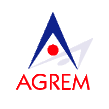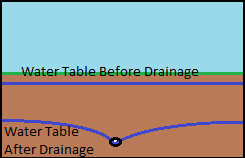
(309) 532 - 2989
agrem@agrem.com
What are relief and interceptor drainage systems?

Relief drainage is a term used to describe the method that tile drains lower the water table in a perched fashion with the water table lowest below the tile line and highest directly inbetween tile lines. Conventional pattern tile systems were first developed in order to provide relief drainage for fields with little to no slope. These types of drainage systems are well known for improving the root zone of crops and increasing yields.

Interceptor drainage is a term used to describe how tile captures water as it moves down slopes in the subsurface. For a drainage tile to be an interceptor drain, it must be placed perpendicular to the flow of water, or more generally perpendicular to the rising slope of a field. Interceptor drains increase the efficiency of subsurface drainage systems on fields with low to high slopes and fields with undulating topography.